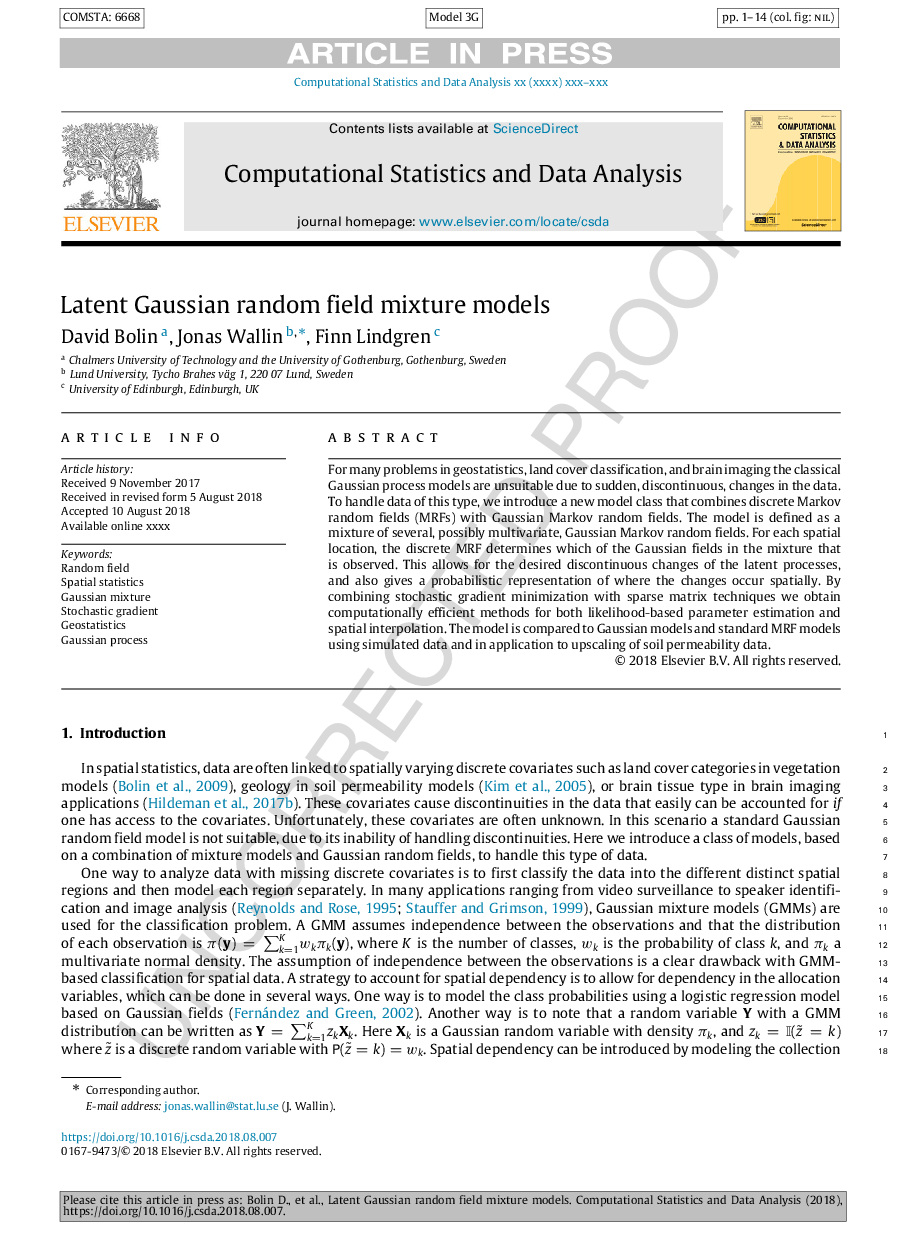| Article ID | Journal | Published Year | Pages | File Type |
|---|---|---|---|---|
| 10327890 | Computational Statistics & Data Analysis | 2019 | 14 Pages |
Abstract
For many problems in geostatistics, land cover classification, and brain imaging the classical Gaussian process models are unsuitable due to sudden, discontinuous, changes in the data. To handle data of this type, we introduce a new model class that combines discrete Markov random fields (MRFs) with Gaussian Markov random fields. The model is defined as a mixture of several, possibly multivariate, Gaussian Markov random fields. For each spatial location, the discrete MRF determines which of the Gaussian fields in the mixture that is observed. This allows for the desired discontinuous changes of the latent processes, and also gives a probabilistic representation of where the changes occur spatially. By combining stochastic gradient minimization with sparse matrix techniques we obtain computationally efficient methods for both likelihood-based parameter estimation and spatial interpolation. The model is compared to Gaussian models and standard MRF models using simulated data and in application to upscaling of soil permeability data.
Keywords
Related Topics
Physical Sciences and Engineering
Computer Science
Computational Theory and Mathematics
Authors
David Bolin, Jonas Wallin, Finn Lindgren,
